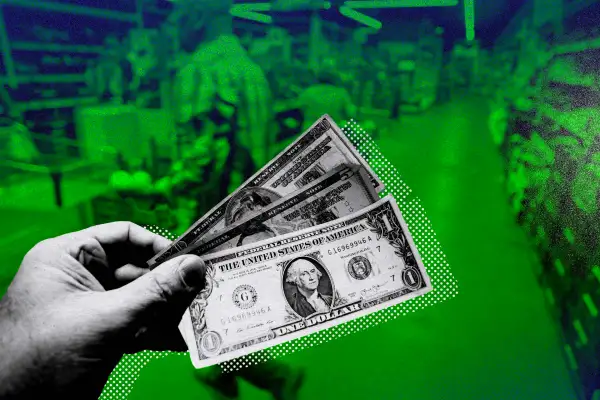Most People Who Make $100,000 a Year Almost Never Use Cash

Fewer Americans are making purchases with cold hard cash, and people with higher incomes are especially like to embrace the fully “cashless” lifestyle.
In 2022, 41% of U.S. adults say they don’t spend any cash in a typical week, an increase from 29% in 2018 and 24% in 2015, the Pew Research Center said in a new report.
Americans in lower income brackets are more likely to use cash than the affluent, who rely more on payment methods like credit cards. But across income groups, the percentage of people who make cash purchases has steadily declined, according to Pew.
Why are fewer people paying with cash? According to another poll, from Gallup, the shift is driven by the rise of online shopping, increases in the number of businesses accepting non-cash payments and the adoption of tap-to-pay smartphone purchase methods like Apple Pay and Google Pay.
Who still pays with cash?
Only 14% of U.S. adults say they still make all or nearly all of their purchases with cash, a decrease from 18% in 2018 and 24% in 2015, according to Pew. In 2022, just 6% of Americans with household income above $50,000 per year say they fall in that category, while the figure is much higher, 30%, for people with household income under $30,000 per year.
The largest increase in the share of people who don’t make any purchases with cash is among the highest earners. For people with household income of $100,000 or more, 59% use no cash in the typical week, an increase from 36% in 2015, according to Pew.
Pew found significant differences based on race and ethnicity. White adults are much less likely to make their purchases with cash than Black and Hispanic adults.
Only 12% of white adults use cash for all or nearly all of their purchases, compared to 26% of Black adults and 21% of Hispanic adults.
Despite fewer Americans paying with cash, 58% say they try to always have some cash on hand in case they need it, Pew found. About 45% of Americans ages 18-49 always try to carry cash, compared to 71% of adults 50 and older.
According to the Federal Reserve, the average consumer carried $67 of cash in their pocket, purse or wallet in 2021 and had an average of $347 of cash in their home, car or elsewhere.
Cash payments accounted for 20% of purchases in 2021, down from 26% in 2019. The Fed says cash use dropped significantly from 2019 to 2020 due to the onset of the pandemic, and then in 2021, cash use was up slightly from 2020.
Americans expect that the shift away from cash purchasing will continue. Gallup reports that 64% of U.S. adults say it's likely the U.S. will become a cashless society in their lifetimes. If that were to happen, 45% of people say they would be upset, 9% would be happy, and the rest are indifferent.
More from Money:
6 Best Credit Cards of September 2022
Dollar Scholar Asks: Will I Spend Less if I Force Myself to Use Cash?
Time to Stop at the ATM? More Businesses Are Offering Discounts to Pay in Cash


